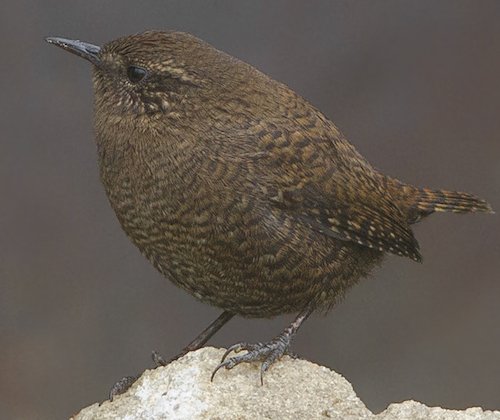Thuringia

Birding Thuringia
he Free State of Thuringia is located in central Germany. It has an area of 16,171 square kilometers (6,243.7 sq mi) and 2.29 million inhabitants, making it the sixth smallest by area and the fifth smallest by population of Germany’s sixteen Bundesländer (federal states). The capital is Erfurt.
Thuringia borders on (from the northwest and clockwise) the German states of Lower Saxony, Saxony-Anhalt, Saxony, Bavaria and Hesse. The ridges of the western Harz Mountains divide the region from Lower Saxony on the north-west, while the eastern Harz similarly separates Thuringia from the state of Saxony-Anhalt to the north-east. To the south and southwest, the Thuringian Forest effectively separates the ancient region of Franconia, now the northern part of Bavaria, from the rolling plains of most of Thuringia. The central Harz range extends southwards along the western side into the northwest corner of the Thuringian Forest region, making Thuringia a lowland basin of rolling plains nearly surrounded by ancient somewhat-difficult mountains. To the west across the mountains and south is the drainage basin of the Rhine River.The most conspicuous geographical feature of Thuringia is the Thuringian Forest, a mountain chain in the southwest. The Werra River, a tributary of the Weser River, separates this mountain chain from the volcanic Rhön Mountains, which are partially in Thuringia, Bavaria, and Hesse. In the northwest, Thuringia includes a small part of the Harz. The eastern part of Thuringia is generally a plain. The Saale River runs through these lowlands from south to north.The geographic center of the Federal Republic is located in Thuringia, near the municipality of Niederdorla.
-
Wikipedia
GNU Free Documentation License
http://en.wikipedia.org/wiki/Thuringia
-
Number of bird species:
State Bird - Wren Troglodytes troglodytes
-
Federation of German Avifaunists (Dachverband Deutscher Avifaunisten e.V. - DDA)
WebsiteThe Dachverband Deutscher Avifaunisten e.V. (DDA) is an umbrella organisation for all German avifaunists. The website contains a wealth of information about the DDA and its monitoring programmes. Here you will find advice and information on bird registration and recording projects, some initial results and completed publications, details of competent local contacts or up to date avifaunistic information and schedules. -
Thuringia – Thuringia Ornithological Society
WebsiteGesellschaft für Vogelkunde und Vogelschutz. Thuringia Ornithological Society (Province in East Germany)The society furthers the study and protection of birds on a scientific basis and maintains and promotes contact to other nature protection organisations in the tradition of ornithological work in Thuringia.
-
BR Rhön
InformationSatellite ViewThe Rhön Biosphere Reserve includes the entire central area of the Rhön Mountains, a low mountain range in the German states of Hesse, Bavaria and Thuringia. -
NP Hainich
InformationSatellite ViewIt is the 13th national park in Germany and the only one in Thuringia. The Hainich Forest features a wide range of beech forest communities, with populations of ash trees, hornbeams, maples, lindens, and occasional checker trees. Many fungi can be found there, along with stands of flowers such as summer snowflakes and anemones. Animals in the park include wildcats, 15 species of bats, 7 species of woodpeckers, and over 500 types of wood beetles. -
NPa Harz – Brunswick Land – Eastphalia
InformationSatellite ViewIn central Germany extends from the Flechtingen Hills in the north to the gypsum karst region on the southern edge of the Harz and from east to west over the entire width of the mountain range on the territory of the three federal states of Lower Saxony, Thuringia and Saxony-Anhalt. -
NPa South Harz
InformationSatellite ViewThe act designating this nature park is the fifth nature park in Thuringia. It has an area of 267 km². Within the nature park there are ponors, karst springs, subsidence lakes and dolines as well as steep gypsum cliffs. Thanks to the many caves, numerous species of bat - including the barbastelle - live in the beech woods, where they find suitable places to roost. It is also home to the wildcat and lynx. Areas of dry grassland with orchids are the remnants of old meadows and pastures on the karst surfaces. -
NPa Thuringian Forest
InformationSatellite ViewIt extends around the Rennsteig and comprises almost the entire Thuringian Forest and the Thuringian Highlands with Eisenach in northwest and Sonneberg in the south. It includes further the 170 km2 (66 sq mi) biosphere reservation Vessertal-Thüringen Forest, and a number of dams like Tambach-Dietharz Dam, Schmalwasser Dam, Ohra Dam, Lütsche Dam and the Leibis-Lichte Dam. -
NR Alter Stolberg
InformationSatellite ViewThe Alter Stolberg is a wooded karst plateau, up to 357.7 m above sea level (NN), in the South Harz in Central Germany. It lies in the districts of Nordhausen in the state of Thuringia and Mansfeld-Südharz in the state of Saxony-Anhalt. -
NR Hohe Schrecke
InformationSatellite ViewThe Hohe Schrecke is a ridge of hills in central Germany. It lies mainly within Thuringia; the southeastern part around Lossa belongs to the state of Saxony-Anhalt.Primarily because of its unity the Hohe Schrecke provides a habitat for the wildcat, black stork and red deer. More than 500 different species of macrofungi also grow here. -
NR Naturschutzgebiet Leutratal und Cospoth
InformationSatellite ViewThis is an important nature reserve in Germany, southwest of the town of Jena. The reserve is maintained by Naturschutzbund Deutschland. The reserve contains the valley of the river Leutra and beech forest. The nature reserve measures 582.9 hectares. A huge variety of wildflowers grow in the valley, including at least 26 species of orchids, for example Neotinea tridentata, Corallorhiza trifida and Himantoglossum hircinum. Other flowers in the reserve include Carthusian pink, purple gromwell and liquorice milk-vetch. -
NR Thüringische Muschwitz
InformationSatellite ViewThüringische Muschwitz is a river on the border of Bavaria and Thuringia, Germany. It flows into the Selbitz near Lichtenberg. The area is 59 hectares (150 acres).
